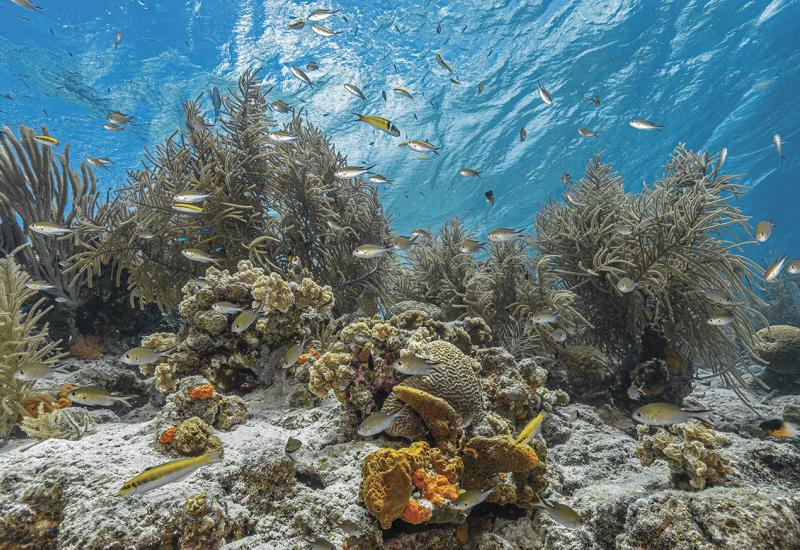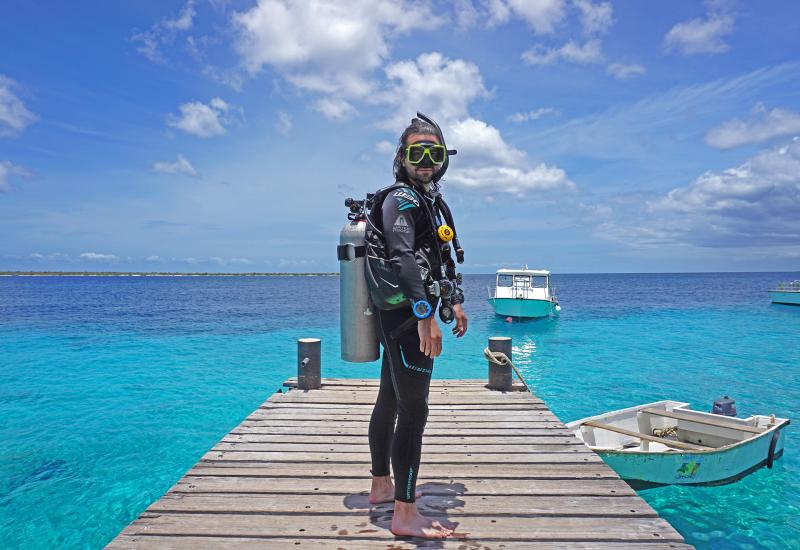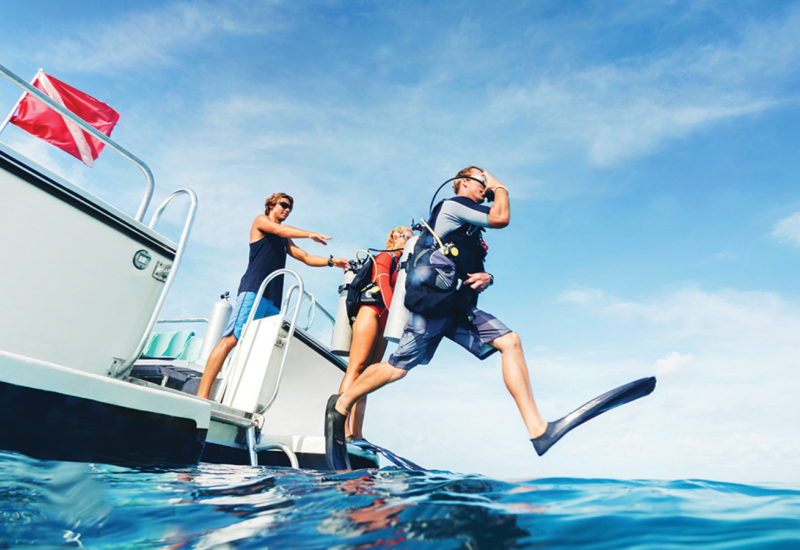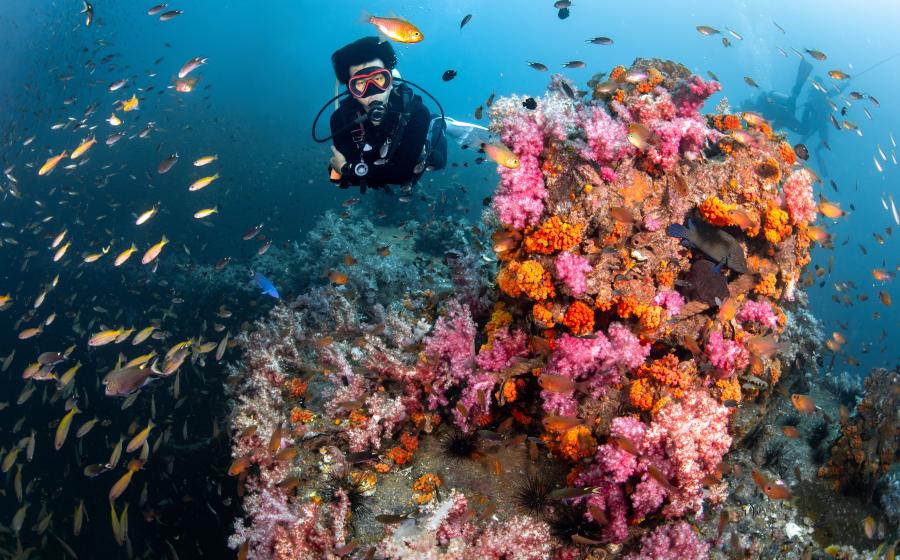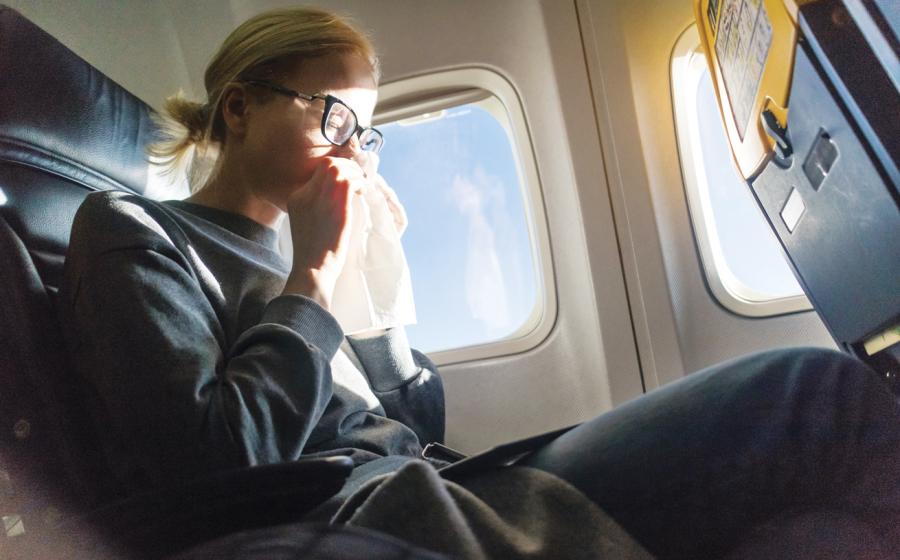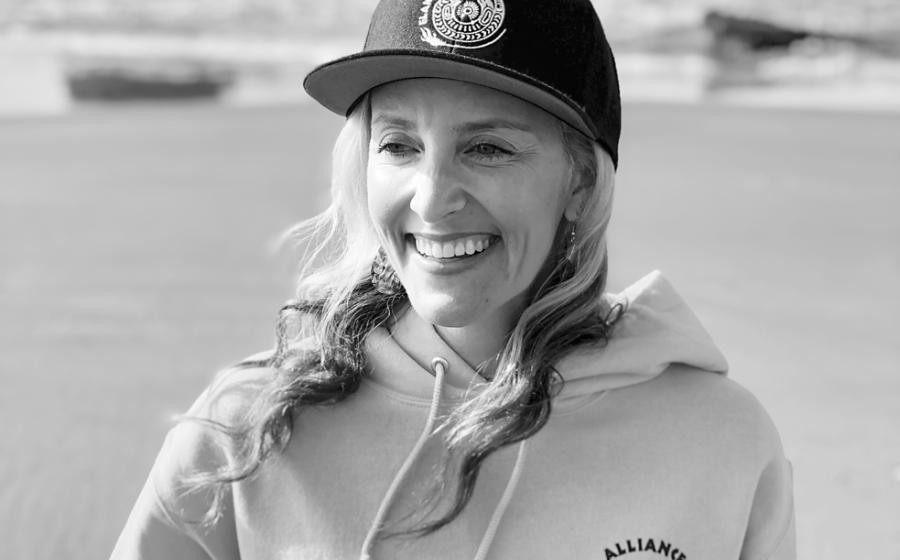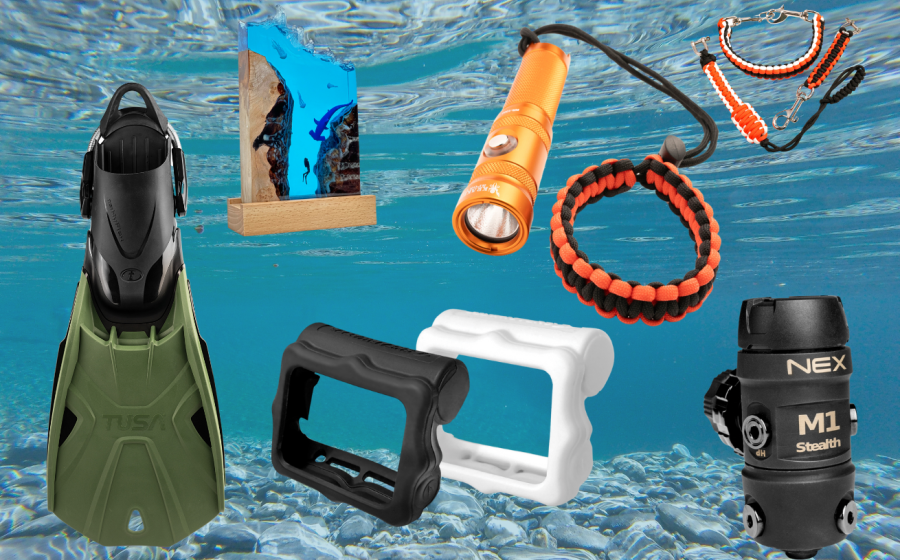What It's Like to Get Scuba Certified
^^I^^ hover at 55 feet in the bluest water I’ve ever seen, watching the magic of the ocean play out in front of me. A silky shark glides over the reef, casting a shadow on a moray eel; a hawksbill turtle grazes along, occasionally chomping on algae; thousands of tropical reef fish buzz through a gorgonian forest; a 200-pound goliath grouper shimmies out from behind a jutting reef.
The cast of characters is magnificent, and as I observe daily life in the Caribbean Sea, I can’t help but think about how I’m experiencing what so few others ever will. Not just because I’m at a pristine dive site in Cuba’s Gardens of the Queen, but because I am a scuba diver. Because I can explore sights and sensations in a world that most people will only ever dream about. I take a deep breath, remembering it was only two years ago that I was dreaming about it myself.
A Floridian childhood is pretty much just jumping from one body of water to the next, from swimming pools, rivers, lakes and oceans to springs, water parks and the sprinklers in your backyard. A love of the Sunshine State’s signature waterways was long ingrained in me before I even thought about diving, so getting certified seemed a natural next step to keep exploring them. My father, who had been an avid diver for 35 years, encouraged me to sign up for a PADI Open Water class at a dive shop in Orlando, my hometown.
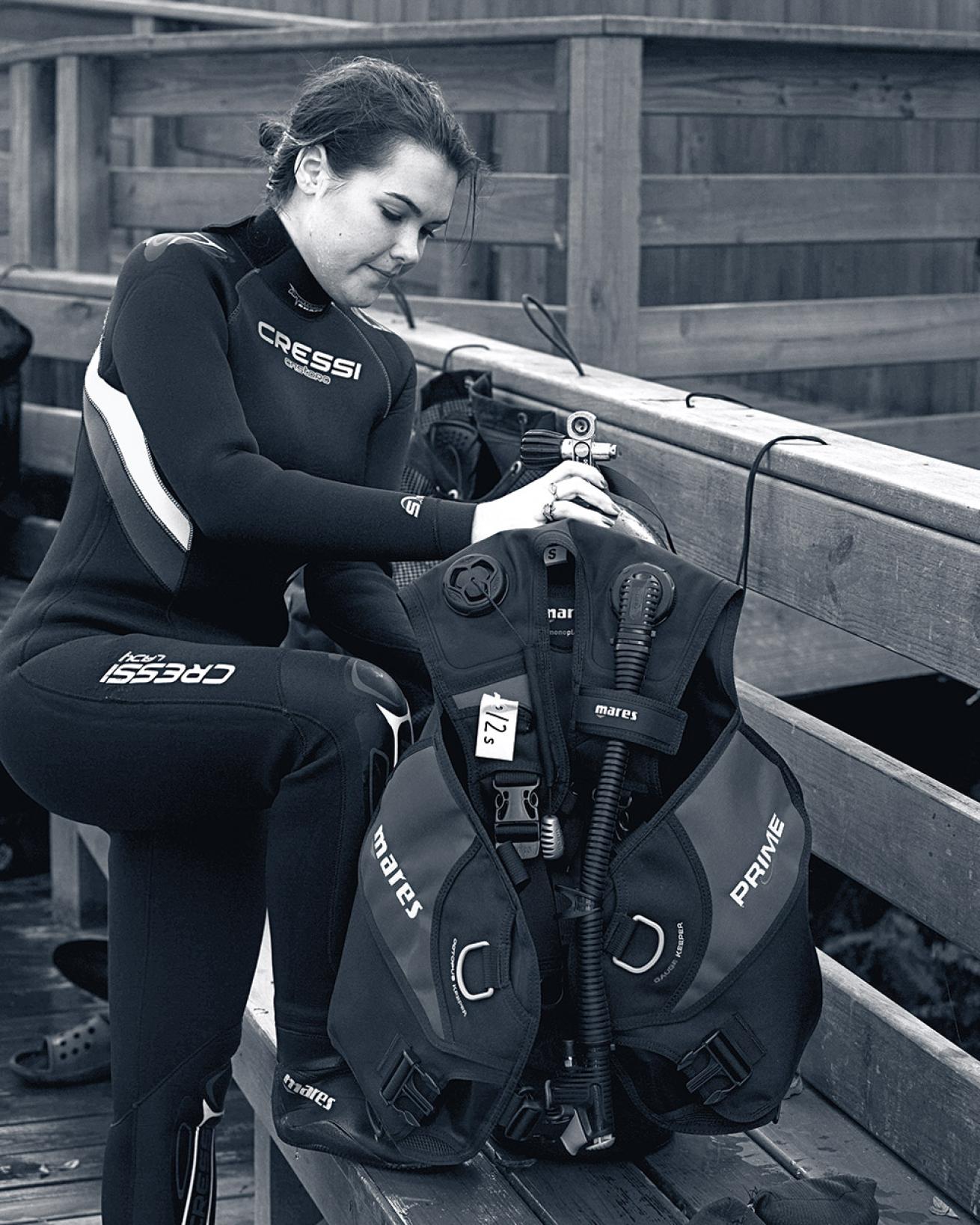
John Michael BullockThe author, pictured setting up her gear, practiced basic scuba skills — taught during the confined-water dives of an Open Water Diver course — at Blue Grotto Dive Resort in Williston, Florida.
Despite being so comfortable in the water, I was a little nervous signing up for the class. In doing research about getting certified, I’d come across a few accounts of people who couldn’t complete their training because they never got the hang of equalizing their ears and sinus passages. I feared that it would somehow hurt or that I wouldn’t be able to do it at all.
But that all changed on the first day of class. My instructor assured us that he was willing to work on any skill for as long as each of us needed, offering extra assistance outside of class if there was anything we were really struggling with.
We started with a classroom session on a Thursday night, followed by two consecutive weekends of in-water training. My class was a hodgepodge of soon-to-be divers: An 85-year-old who wanted to cross off a bucket-list item; an engaged couple who hoped to dive on their honeymoon; a student about to spend the summer surveying reefs in Belize; a 15-year-old girl who had been counting down the days until she was old enough to get certified.
New Diver Tip
The Knowledge Development portion of the Open Water Diver course is offered online, as independent study with a manual or in a classroom setting. Decide which is the best method for you to learn and retain the information before signing up for your course.
Before the first class, we were asked to read our textbook — the PADI Open Water manual — and watch the accompanying training DVDs. I’d studied the book religiously, taking time to ensure I understood the material and completing the end-of-chapter review questions. At our first classroom session, our instructor walked us through the basics of scuba, from etiquette and safety measures to dive tables and decompression theory. Studying beforehand helped: It was a lot of information in a short amount of time, and not all of it could be completely understood without getting in the water, but that just made me more excited for the upcoming weekend of confined-water training.
Saturday morning, we started on the pool deck, setting up our gear and breaking it down over and over. As I connected my low-pressure hose to my BC for about the seventh time, I looked longingly at the water. It seemed like we’d never get wet. But getting familiar with the gear was all part of the process.
Finally, we were ready to make our first giant strides. My buddy held my tank while I strapped on my BC. When he let go, I almost fell backward. I was surprised by how heavy it was. Finding my balance (and my core strength), I headed to the edge of the pool.
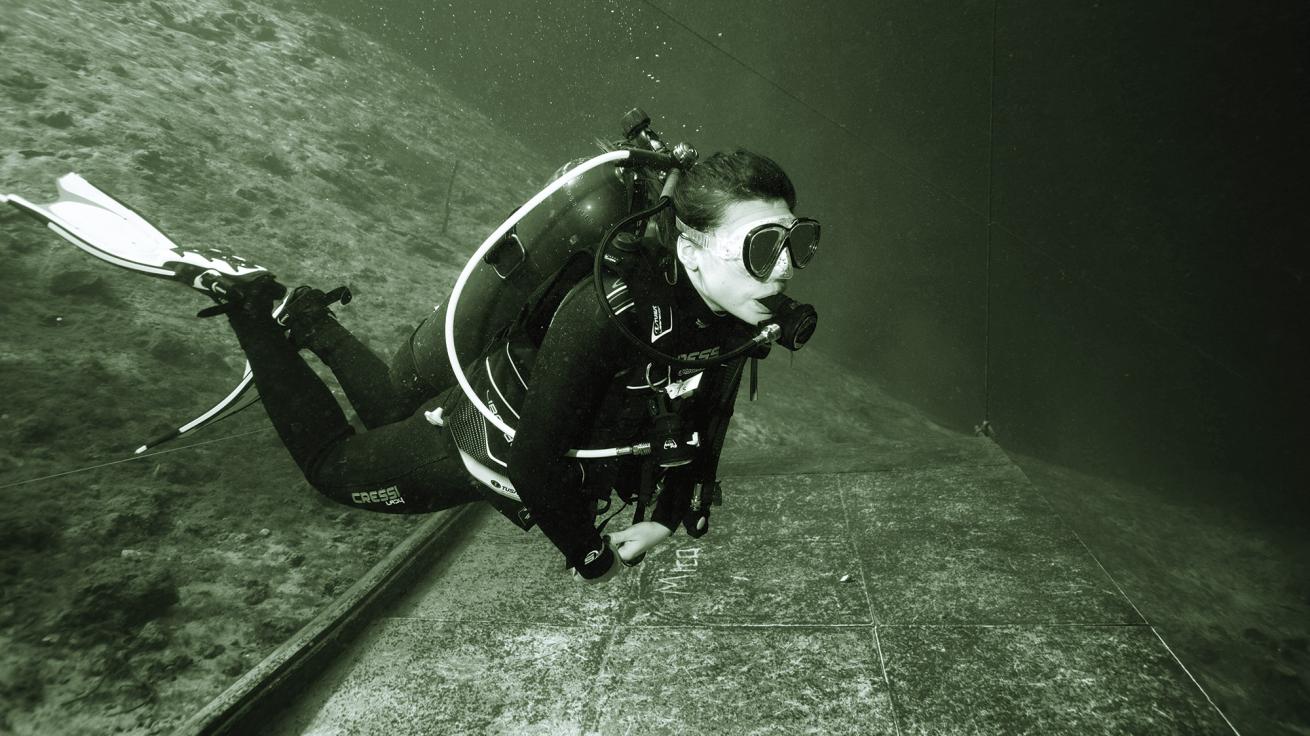
John Michael BullockThe author practices buoyancy control.
My heart was thumping. What if I couldn’t equalize? What if my equipment malfunctioned? What if I couldn’t do one of the skills? It was my turn. I put one hand over my reg and the other on my mask strap. Three … two … one … splash! As soon as I hit the water and popped to the surface, all of my nerves disappeared.
We spent that day and the next doing hand-signal drills, orally inflating our BCs, sharing air and practicing other skills underwater.
The only part of the training I really disliked was flooding and clearing my mask. Watching almost everyone struggle, I was glad I had a mask with a purge valve in the nose pocket. Instead of the standard way of clearing, which looked so difficult, all I had to do was exhale hard through my nose, and the water drained out.
I was elated to have a shortcut for this skill — until I got a new mask, sans purge valve. Then I had to practice clearing it of water while remembering my instructor’s tips. I absolutely hated it and had to force myself to “flood” it — let it fill with water — and clear it over and over until I was comfortable. At one point, I almost gave up, because how often would I be knocked around during a dive, really? But later, after I took my first flutter kick to the face (thanks to an extremely uncoordinated buddy and my new-diver lack of spatial awareness), I was grateful that I’d mastered it on my own.
As I observe daily life in the Caribbean Sea, I can’t help but think about how I’m experiencing what so few others ever will.
By the end of the weekend, we were all exhausted but couldn’t wait for what was to come.
When the next weekend rolled around, I was ready for the big time. Everything we’d learned had led us to this: our first open-water dives.
We waded out to the middle of Lake Denton, a site smack-dab in the middle of Florida that’s used primarily for training. Gathered around the descent line, we discussed our dive plan one more time: descend, practice skills, leave some time for exploration.
We followed the line down 25 feet to the bottom of the lake, and that’s where it clicked. Wide-eyed and wobbly, I knelt on the sand as small, friendly bluegill bumped into my mask and wetsuit. It was cold, my mask was already starting to fog up and the visibility was admittedly horrible, but I just couldn’t get over the astonishing fact that I was breathing underwater. My buddy and I shared a look of sheer awe. I knew then that I would be a dive addict for life.
As I waited to be drilled on my skills, I imagined swimming alongside green sea turtles, massive manta rays and speckled whale sharks — animals I’d only seen in aquariums. The possibility of meeting these creatures face to face and exploring underwater caverns, colorful coral reefs and thick kelp forests was the reason I began this journey.
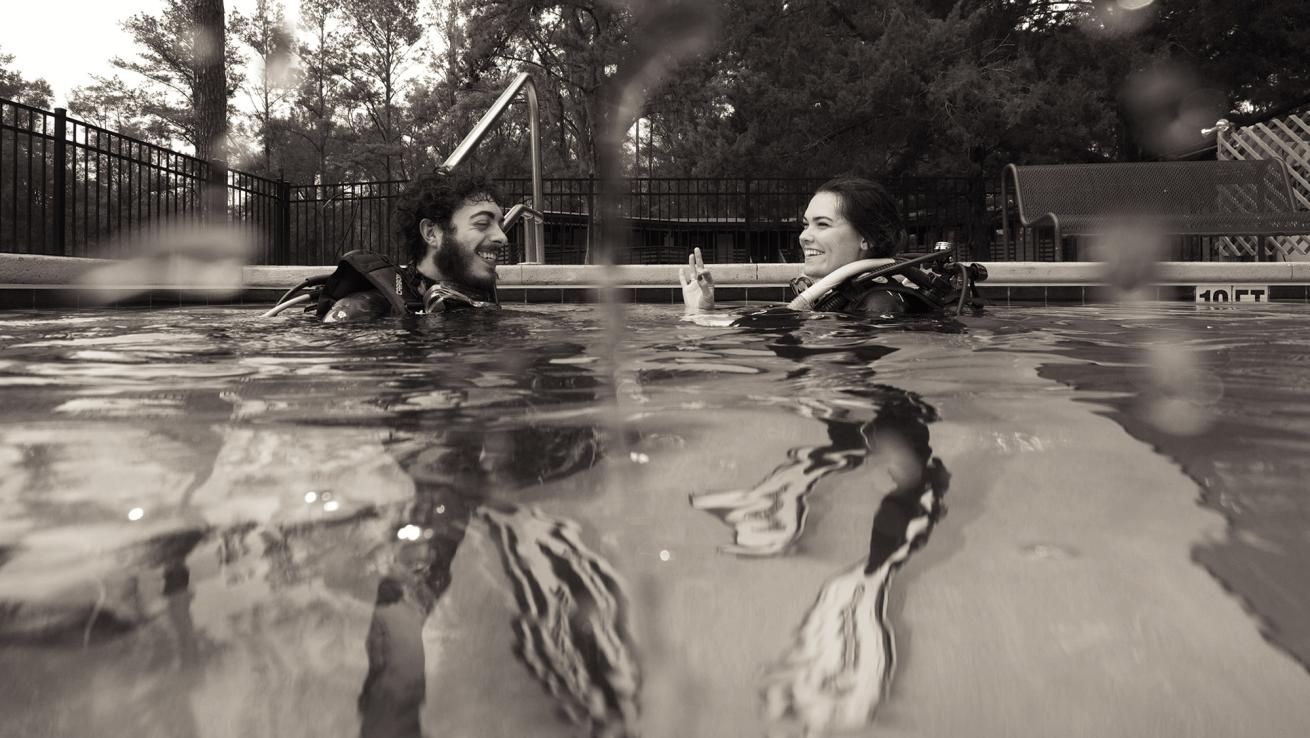
John Michael BullockThe Open Water Diver course is divided into three sections: Knowledge Development (or classroom learning), Confined Water Dives (typically in a pool) and Open Water Dives. Skills such as hand signals (above) and mask clearing are taught, practiced and tested during the course.
After running through our basic skills, we practiced controlling our buoyancy by completing a swim-through obstacle course made from suspended PVC pipes. I felt like a clunky, overdressed mermaid as I drifted through the water, inhaling and exhaling to rise and sink through the course.
Finally, we got to explore the lake’s sunken treasures — among the most exciting is a jon boat and an old bicycle. I’d later dive more exciting wrecks, but these two — as my first ones — remain the most memorable.
Back at the dive shop Sunday afternoon, we were all on a post-dive high. Our instructor informed us that we had all passed our written exams and called us up one by one to ceremoniously hand out our “diplomas.” We were officially certified divers, and it felt awesome.
Two years, three more certifications and almost 100 dives later, I find myself on a reef in Cuba.
I’m surrounded by jacks in a school the size of a house. I have a different buddy this time, but we still share that look of awe. It’s become a familiar thing, being constantly wonder-struck by the underwater world, from seeing hundreds of freshwater turtles in a spring to coming face to face with a crocodile. And I could never experience it until I got my C-Card. I was only 19 when I took my Open Water course, but I still can’t believe I waited as long as I did to get certified.
Cuba is no Lake Denton (thankfully). As many divers across the world who get certified in murky lakes or freezing quarries can tell you, the reality is that — unless you travel to get certified — your first dive probably won’t be your best. But there’s some excitement that comes with that territory: You’ve got a whole lot to look forward to.


